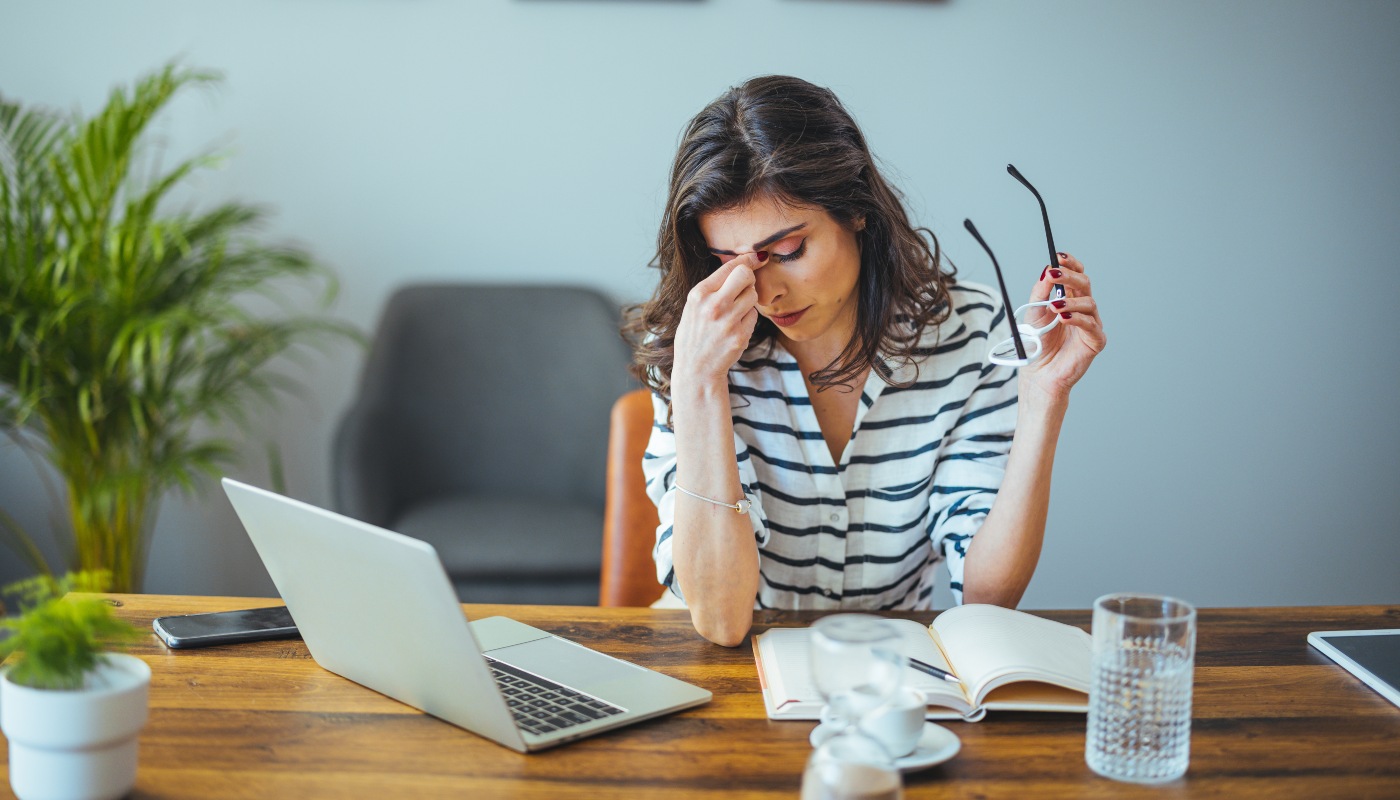Tips for reducing visual fatigue at work
Find out what visual fatigue is, identify its symptoms, and learn effective tips for reducing it in the workplace. Protect your eyes and improve your well-being!
KNOW YOURSELF
Share

Visual fatigue is an increasingly common eye condition that has a lot to do with the use of digital devices. There is no doubt that we have changed the way we work and our lifestyle. Not surprisingly, it is estimated that most people spend between 8 and 10 hours a day in front of the screen. Our eyes are not used to spending so much time in front of it and eye fatigue is just one of the consequences of this overexposure.
Visual fatigue has easily identifiable symptoms: eye irritation, blurred vision, visual discomfort, dry or irritated eyes, stinging, dry or watery eyes, difficulty concentrating or focusing eyesight, headache... Although it is not a pathology, but a simple annoyance, it is true that it can be very unpleasant or irritating, so implementing some recommendations will be key to avoiding it.

What causes eye fatigue?
Before addressing how to prevent eye fatigue, it is important to look at its causes.
Inadequate lighting, that is, excessive or too dim, which requires the eyes to make more effort to compensate, will damage our vision. It also happens with very bright light or glare.
A very dry environment, with air conditioners, heaters or fans, can also lead to greater visual fatigue.
Stress or tiredness can eventually lead to eye fatigue.
Looking at screens on digital devices, reading without pausing to rest your eyes, driving long distances or doing activities that require a lot of concentration also tire your eyes. In fact, people who watch screens for two hours or more every day are considered to be at increased risk of suffering from this uncomfortable condition.
How can you reduce eye fatigue and even prevent it?
In addition to having healthy habits or, if necessary, using glasses to perform specific activities (such as using the computer or reading), there are some tips that will help reduce eye fatigue:
Having good postural ergonomics when working. It is also important to adjust the brightness and contrast of the screen so as not to overexert yourself, choose a good font size and place the monitor slightly below the line of sight to tilt your head a little.
Taking breaks during the activity, following the 20/20/20 rule. After 20 minutes of looking at an upcoming screen or task, rest your gaze for about 20 seconds and look 20 feet away (about 6 meters). Let's not forget to blink, which also helps to moisten the eye.
Adjusting the lighting. We should not do tasks with insufficient lighting or dim light, even when we are watching TV or using backlit screens. For this reason, it is advisable to use a focal light for tasks at close distances, such as reading.
Limiting screen time. It is very important not to abuse it, especially with children, and to take periodic breaks.
Improving the air quality of the space, avoiding smoky spaces or environments that may favour the appearance of eye irritation. A good option is to include humidifiers at home or appliances that circulate air to regulate the amount of dry air.
Performing eye exercises, such as changing focus or relaxing the eye area. This way we can reduce irritation and heaviness.
Using artificial tears. They will help to moisturise and lubricate the eyes, to be able to prevent and alleviate the sensation of dry eyes.







